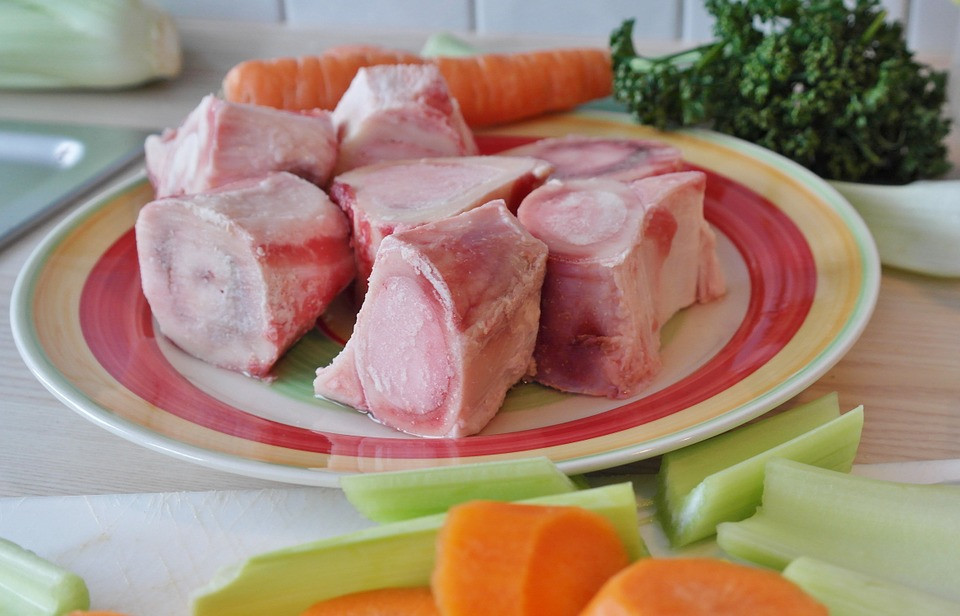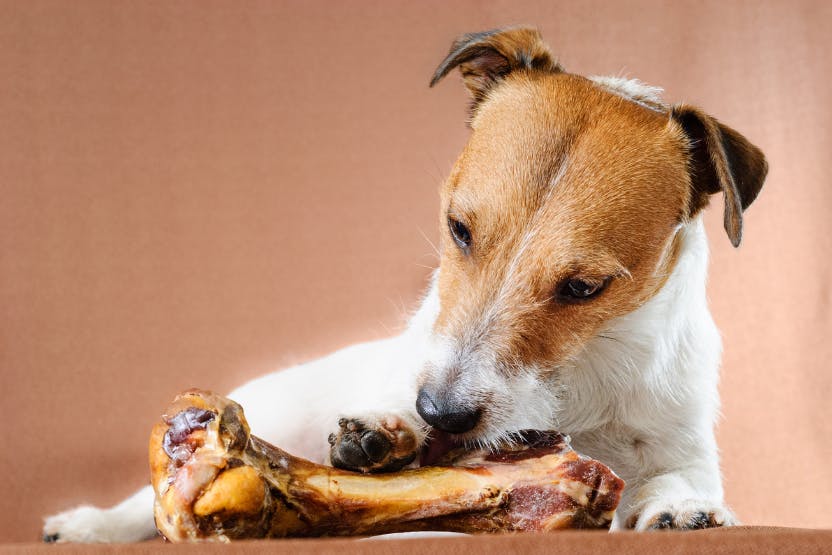Many dog owners ask, “Are raw bones good for dogs?” The truth: there’s no easy answer-how raw bones can provide a little but also mean a lot of risk. In this guide, we will look at the safety of raw bones for dogs, good sources to feed and risks to be aware of.
Are Raw Bones Safe for Dogs?
Raw bones are less likely to be a hazard than cooked ones because cooking makes them more brittle and likely to abscess – also potential plans for choking and vomiting inward injuries. But raw bones are still at risk, including:
- Choking hazards – Bones can get stuck in the throat.
- Broken teeth – Hard bones may crack your dog’s teeth.
- Digestive blockages – Large pieces can obstruct the intestines.
- Bacterial contamination – Raw bones may contain Salmonella or E. coli.
To minimize risks, choose the right type of bone and supervise your dog while they chew.

Best Raw Bones for Dogs
Not all raw bones are created equal. The safest options are:
1. Raw Meaty Bones (RMBs)
- Examples: Chicken wings, necks, and backs; turkey necks; lamb ribs
- Benefits: High in protein, help clean teeth, and are easily digestible for most dogs.
- Best for: Small to medium dogs (larger breeds may need bigger options).
2. Recreational Raw Bones
- Examples: Beef knuckles, marrow bones, or femur bones
- Benefits: Long-lasting chew that satisfies a dog’s natural urge to gnaw.
- Best for: Large, aggressive chewers (remove marrow if it’s too fatty).
3. Edible Raw Bones
- Examples: Pork ribs, duck feet, or rabbit bones
- Benefits: Fully consumable, rich in nutrients like calcium and phosphorus.
- Best for: Dogs with strong jaws who can safely break them down.

Risks of Feeding Raw Bones to Dogs
While raw bones can be beneficial, they aren’t risk-free. Watch for:
- Splintering – Even raw bones can break into sharp pieces.
- Pancreatitis – High-fat bones (like marrow) may trigger inflammation.
- Aggression – Dogs may become possessive over bones.
- Bacterial infections – Always handle raw bones with proper hygiene.
Tips on Feeding Raw Bones to Your Dogs Safely
- Select Right size, The bone should be bigger than your dog’s muzzle or not chew whole him.
- Watch with Chewing / Take bone away if it is getting small enough to choke on.
- Reduce the Frequency – Do not give raw bones more than 2 to 3 times a week to avoid any sort of digestive problems.
- Proper Storage- store bones raw and re-frozen if possible, if foul then throw it out.
- Ask Your Vet – Some pets should never be fed bones at all (e.g. dogs with dental issues or sensitive stomach)
Final Verdict: Are Raw Bones Safe for Dogs?
Yes, but with caution. Raw bones are a healthy and natural chew for dogs when they are selected correctly & carefully monitored. Pick a softer, meaty bone for small dogs, and a durable recreational bones for power chewer. Consult with your vet and always supervise your pet, if unsure.
Following these guidelines will allow you to safely include raw bones into your dog’s diet and reduce the hazards.
